

1
Read some of our great articles on a range of parenting topics from sleeping to teething. We publish new blog posts regularly and feature a number of baby sleep experts and their top tips
Filter by tag:
Tags...Oct 29 2015
Posted by: SnoozeShade HQ
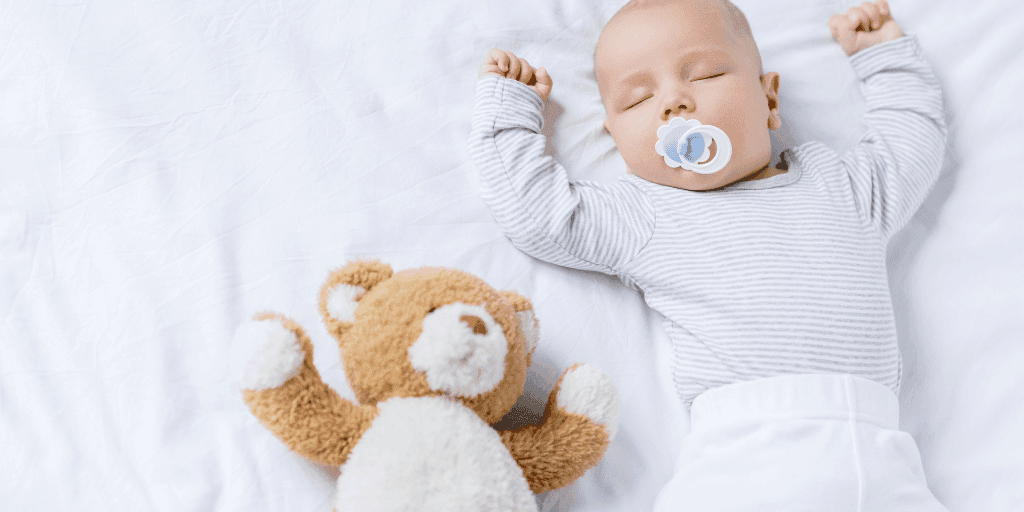
Babies really are tricky little things. Just when you think you understand them, they go and change. Small babies and routines can seem elusive at times and yet all the experts tell you a routine is the only way to stay sane.
Here at SnoozeShade, we are huge advocates of non-judgemental parenting. If it works for you, it works for you and never mind what anyone else says. But that’s not to say we can’t all benefit from some tips and advice now and then. So, do you want to hear more about the top three baby sleep problems? Read on…
Put bluntly, a sleep issue is only a problem if it affects you adversely. If your baby is up until 11pm each night and you’re perfectly happy with that, then it’s not really a problem. So, take no notice of Great Aunty when she tells you you’re ‘making a rod for your own back’ each time you choose to rock your baby to sleep. If it isn’t a problem for you, it shouldn’t be a problem for her.
BUT if your baby’s sleep is causing you and your family some kind of upset, then perhaps it could be classed as a problem. If you’re exhausted and want to make some changes, then it’s a problem.
So, what are the top three baby sleep problems?

If feeding, rocking, bouncing or patting your baby is the only way that they are able to fall asleep and you’d really like her to be able to go to sleep independently, then don’t fret. There are ways to make positive changes.
Babies are creatures of habit and let’s face it – who wouldn’t want to be held as they fall asleep? You are only doing what comes naturally as a parent after all and comforting our babies is the first thing we want to do when they’re upset or cranky through tiredness. Also, parenting is exhausting! So if you know that your baby is more likely to fall asleep if you rock her in her stroller for 10 minutes first, then why would you not do that? You need down time too, right?
The problem occurs when your baby wakes in the night and then can’t get back to sleep by themselves. Every human wakes up at different times during the night and babies, just like us, sometimes need help to get back to sleep again.
So, the theory goes that if you teach your baby to fall asleep independently, without any of the rocking and cuddling they are used to, then they will eventually be able to do this for themselves during in the night. This assumes your baby does not have any needs to be met such as being hungry, wet or cold.
So, when your baby is ready for bed, give them a last cuddle and a feed and then put them down sleepy, but not yet asleep, in their crib. Pat their tummy and talk gently or sing to them, then start to gently leave the room. Eventually, they will get the hang of it and learn to self-settle.
Newborns sleep almost all the time. As your baby grows, their need for plenty of sleep starts to diminish and they will eventually not need one of the naps they have previously had. When babies decide to drop one of their daytime naps, it is always much harder for the parents to deal with than the child – nap time was invented for parents, after all. At first, many babies decide they want to drop a nap before they are truly ready, which can result in an over-tired and cranky baby, plus an over tired and cranky parent too. Signs that your baby is not ready to drop a nap include:
This is where a good sleep routine and nap routine will help you. Bear in mind that from around the age of 12 months, it is usual for your baby to drop one nap. The next step is that your baby wants to drop their naps altogether… this will usually happen any time from around 18 months but you may find that your baby will still need at least one nap a day until the age of three, or even four years. Getting them to agree may not be so easy though!
Problem 3: My Baby is Ready to Move From a Crib to a Bed
This is a key developmental milestone and a big transition for your child. It also tends to create problems for you. Whatever your situation (if you bed share, room share or baby is in her own room), moving to a big bed can be fraught with problems if you’re not careful.
For more guidance on sleep training, we have compiled a short guide so you don’t have to wade through lots of information.
Further Reading:
Toddlers and Sleep – How to Negotiate This Period
Avoid Night Time Sleep Problems with Daytime Naps
10 Baby Sleep Myths – Busted!
Oct 26 2015
Posted by: SnoozeShade HQ
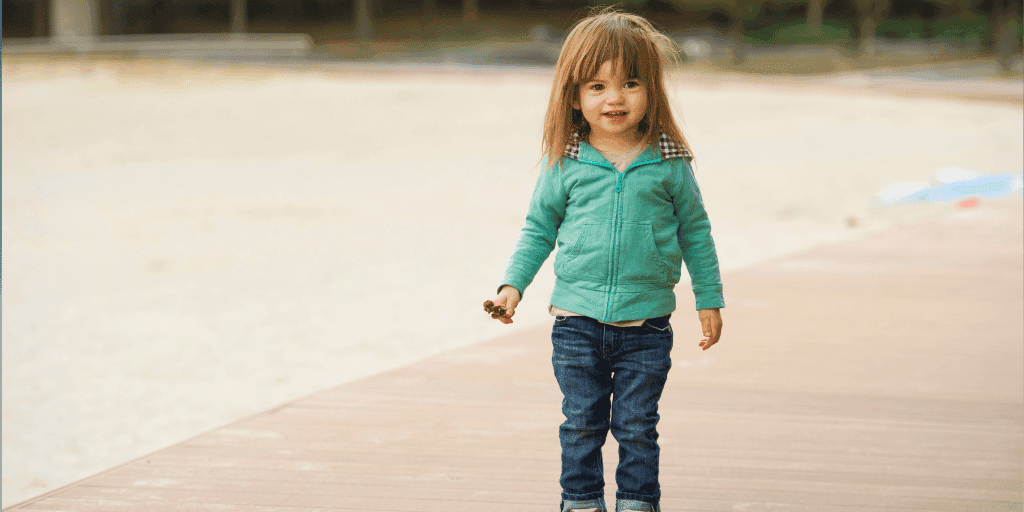
You may not have heard about the two year sleep regression. It occurs just as you have managed to establish a good and reliable sleep pattern for your baby (teething and illness allowing). As with most things when it comes to kids, the two year sleep regression may or may not affect your child but if it does, here is a very quick guide to how it can affect your toddler’s sleep patterns.
Even though it can be easier once your child hits the two-year mark, as they are better able to communicate with you, they can still cause you confusion and anxiety. They may have been sleeping well up to this point, or they may have had disturbed sleep patterns. Either way, at 24 months, there are likely to be a few more reasons why they wake at night. These are the main culprits:
Any of these factors combined will result in less sleep for you and your toddler. So how do you spot the two year sleep regression?

At this age, your toddler will need more time awake. When they are awake, the chances are high that much of that time is spent playing at full speed. So, although they are awake for longer, they are using up a lot more of energy, often resulting in feeling rather over-tired at the end of the day. They may resist going to bed, as they still think there is fun to be had.
Despite being very tired (and probably cranky) your toddler is a strong-willed individual who will tell you in no uncertain terms that they do NOT want to go to sleep, thank you very much. So, it’s important to know how much sleep they really need.
At 24 months, your child needs 12 hours of sleep per day; any less and they will be over-tired.
So, if your two-year-old suddenly starts to fight bedtime, wakes in the night after previously sleeping through and suddenly decides to drop naps, then the two-year sleep regression could be the culprit.
The best thing that you can do with the two year sleep regression is to ride it out. Most phases are just that – a phase, that shall pass soon. Do what you can to remain consistent and confident in your approach to the regression, make sure you have a great bedtime routine (and a mini version of the routine for nap times) and remember that you are an amazing parent. Good luck!
Further Reading:
How Teething Leads to Sleep Regression
Toddlers and Sleep
How Long Should My Baby Sleep?
Oct 03 2015
Posted by: SnoozeShade HQ
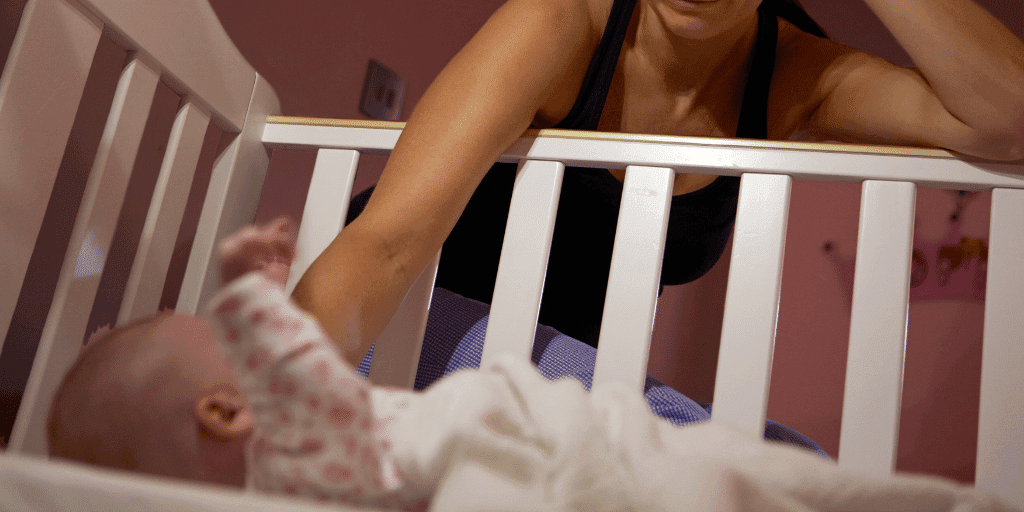
Very few babies sleep through the night from birth. So, if your baby often wakes up, rest assured you are doing nothing wrong!
Babies are programmed to wake at regular intervals and there are many reasons for this. They wake mainly due to hunger, as their stomachs are so small that they need to be filled more regularly than ours do. But how do you make sense of a baby that wakes a little more often than the ‘average’ baby?
Your Baby is Teething
This is one of the most common causes for your baby to be restless at night. Teething can account for so much in a baby’s first year. You may have seen this post about the five stages of teething and it’s well worth another read if you’re in the thick of it now. A teething baby is likely to wake up a few times a night until the pain and discomfort has eased, so you might want to bear that in mind. There is little you can do about teething, other than to take steps to make your baby as comfortable as possible. Knowing that it is the reason why your baby is waking, and that it will pass, might be of some small consolation.
Your Baby is Ill
If your baby is unwell, it goes without saying that sleep is going to be affected. Sometimes, your sick baby might sleep a lot more than usual, which can be a worry in itself but at other times, your sick baby might wake a lot too. Read this post for tips on how to help a baby sleep through a cold and contact your doctor if you are at all worried.

Is Your Baby Too Hot or Too Cold?
Your baby cannot regulate their own body temperature in the same way that adults can and they are also unable to snuggle down under the comforters if they are feeling chilly. That’s what you’re there for. Being too hot or too cold is a major reason why some babies wake up at night but luckily, there is a lot you can do about it. Check the temperature in your baby’s room – ideally, it should be between 16 and 20 degrees Celsius. Use a basic room thermometer to keep an eye on it, then you can add or remove layers as necessary.
Loud Noises Can Affect Baby Sleep
Some babies are lighter sleeper than others and as they grow older, they generally become more aware of sounds going on around them. Make sure that once it is bedtime, the rest of the family adhere to a quiet policy. Make sure too that there are no obvious distractions outside the room that could disturb sleep – loud dogs barking, traffic noises, the TV blaring. If there are, you might want to consider a white noise machine or similar, which can block out these noises.
Personality
Your baby’s personality has a lot to do with their sleep habits. We all have different personalities as adults, so why should babies be any different? Some babies find it harder to settle to sleep once they’ve woken up and sometimes that can be attributed to their personality. If your baby is what they call a ‘fussy’ baby, you might be able to put some of that down to personality once you’ve ruled out changing and feeding. For these situations, we recommend repeating the following: this too shall pass…
Further Reading:
Baby Colic: Myths and ‘Cures’
Your Month-by-Month Guide to Sleep Regression
Three Baby Sleep Problems and Their Solution
Sep 09 2015
Posted by: SnoozeShade HQ

So we’ve done the first day. We’ve counselled our children on the wonders of school, been counselled on how great an adventure it is for them, and we’re starting to settle into a new routine of school runs and early morning get ups. But what if life doesn’t seem to be settling as well as we’d hoped it would? Firstly, it’s still early days! Secondly, there are steps you can take to make it go a little more smoothly. Here are some tips on helping kids settle at school.
Be ready
As much as you can, prepare for the busy school morning. Set everything out ready the night before so that there are no last minute tears over missing school shoes, or tantrums over what to have for breakfast. It really does help! You might want to also prepare emotionally for the school day- both you and the children! Talk about what you’re doing tomorrow- some children will take a while to realise that school is every day, especially if they’re used to part time childcare. Also, try to prepare your child for the school day by asking about routines that you know occur- lunch time, play time, PE etc. Let your child talk to you about what they’re looking forward to at school, and talk over any worries they have too. Monkeyfootedmummy (@monkeyfeettweet) says she always starts with lunch time, as this is where the real adventures happen at school!
Have a good after school routine
A top tip from Fi, from Childcare is Fun! and author of The Baby Bedtime Book. A good after school routine is about as essential as a good bedtime routine. All work and no play is no fun for anyone! Make sure you agree on an achievable activity after school, that you and your child can both look forward to. It can be a trip to the library, or the park, or even home to play a board game. Let your child decide, and if your child has homework, make sure this is factored into the plans too!
Fi also highlights the importance of talking to your child. Ask them to tell you three things about their day; often this will encourage them to talk about anything that is worrying them too. Talk about the school day well before bedtime so that if any issues arise, you can chat about them, hopefully without disturbing sleep.
Have a good bedtime routine. Another top tip from Fi! We all know the importance of a good routine for babies and toddlers, and this routine remains important for school age children too. A good bedtime routine is one that works for you and your family, so find one that suits you. Most families tend to agree that bath, story and bed works well, and there is lots of research supporting the importance of the bedtime story too.
Betta Living recently carried out a poll to uncover 2014’s favourite bedtime stories, and have a series of events planned for September and October that are designed to support bedtime reading. Although many books are readily available on e-readers these days, there really is nothing better than snuggling down at bedtime with a ‘real; book- and the bedtime story can be a chance for you and your child to reconnect after a busy day.
If you’re wondering, the top three bedtime story books are The Gruffalo (Julia Donaldson), The BFG (Roald Dahl) and The Lion, the witch and the Wardrobe (C.S Lewis) -proving that some stories never go out of fashion.
Embrace new friendships
And this goes for both your child, and you. Sometimes settling onto the school playground is just as hard for adults as it is for children. Make an effort to talk to your child about their new friends- the folks at Lumipotti suggest arranging play dates so that these friendships can be strengthened outside of school too. Another way to reinforce new bonds is by taking the time to chat to other parents when you drop off and pick up. Remember that it can be daunting for everyone, and that the school run can sometimes be a lonely place when you don’t know anyone. If you make the effort to be friendly and sociable, chances are your child will, too.
Talk to the teacher
If your child is really struggling to settle, either with a new sleep routine, the new school day routine, or just school in general, do make an appointment to see the teacher. Nobody at school wants any child to suffer without making every effort to ensure they have done all that they can to help. Some children will take longer than others to settle, and some will seem to fit right in straight away. Both situations are totally normal, and there is no need to worry. If your child does need longer, there might be things that the teacher has noticed that you haven’t.
For example, some children find the business of school drop off daunting, others find that lunch time is too crowded, and others will feel anxious about getting changed for PE. In these cases, simple solutions can be found to ease your child in more gently.
Whatever the reason for upset, remember that while it might not sound important to you, it is to THEM. Listen to your child, talk to them and make sure you involve the teacher if you are concerned.
Jul 16 2015
Posted by: SnoozeShade HQ
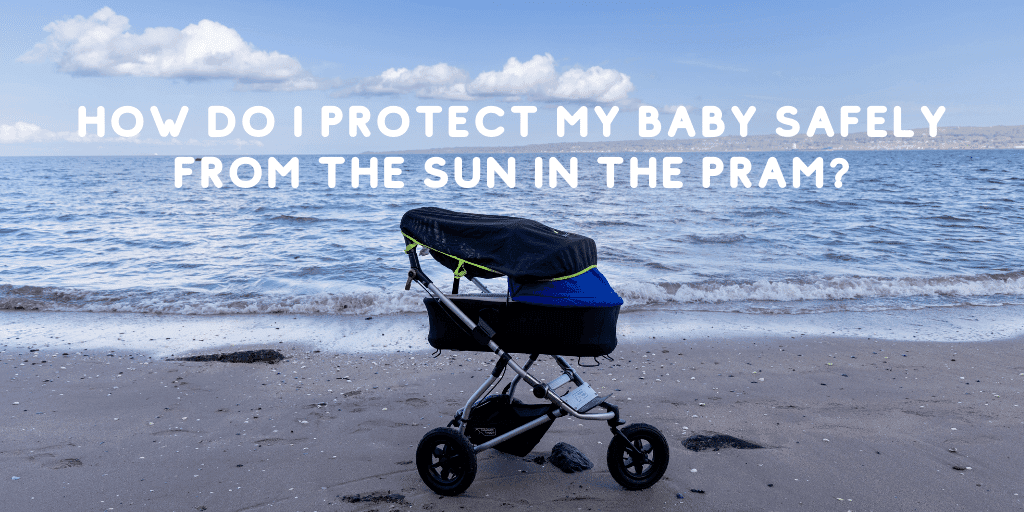
One of the most common questions we get asked is ‘How do I protect my baby safely from the sun in the pram?” due to a number of viral scare stories that circulate about the apparent dangers of draping a blanket over baby’s pram, which is why we felt it important to remind people of the facts.
This is the post I wrote when these stories first appeared on social media : don’t be too alarmed at Swedish Scaremongering . Please read, and be reassured that your SnoozeShade is perfectly safe to use!
Because this viral scare story continues to be shared years after we originally posted this article we have put together more detailed information on why SnoozeShade products are safe and why overheating is not an issue.
Click to read more on why and how SnoozeShade is safe.
The most important element of sun safety for babies is keeping them in the shade and well hydrated.
Keep baby protected from the sun
Doctors worldwide recommend that babies under the age of 6 months are not exposed to direct sunlight at all.
If your baby is shaded then she is keeping cool and out of the sun’s harmful rays too. But just in case, there are some sun safety tips in this post Why suncare for babies and toddlers is so important and Sun care for babies, .
For older babies use appropriate sun screen from April onwards (even on cloudy days). And don’t forget hats!
It’s best to avoid the hottest part of the day (midday) anyway, so get inside if you can.
Keep baby as cool as you can
If you cannot stay indoors (or don’t want to – after all, we don’t get much summer in the UK) then the most important thing you can do to keep baby safe in hot weather is keep in the shade and make sure baby is well hydrated.
Try and keep your baby as cool as possible. Keeping them in the shade is one way to do this, and why we recommend the SnoozeShade!
We’ve written a post on how to how to decide which SnoozeShade is right for you and your baby and how to use it to get the maximum benefit from it
Keep an eye on baby while sleeping
When your baby is sleeping, it’s easy to forget the time and rush about doing all the things that you can’t do while they’re awake. And there’s nothing wrong with that! But do check regularly on your baby, to make sure that they are comfortable. Use your judgement here. The SnoozeShade is fully air-permeable and safe to use, but we cannot predict how hot it is going to be and it may be more sensible to head inside than stay outdoors.
Inside, take steps to ensure your baby is not too hot while she sleeps. This post, Baby sleep: staying safe in warm weather, has lots of safe sleeping advice.
If you have any questions at all you can find us on Instagram, Facebook and Twitter and ask away. Alternatively you can email us on hello@snoozeshade.com
Jul 09 2015
Posted by: SnoozeShade HQ
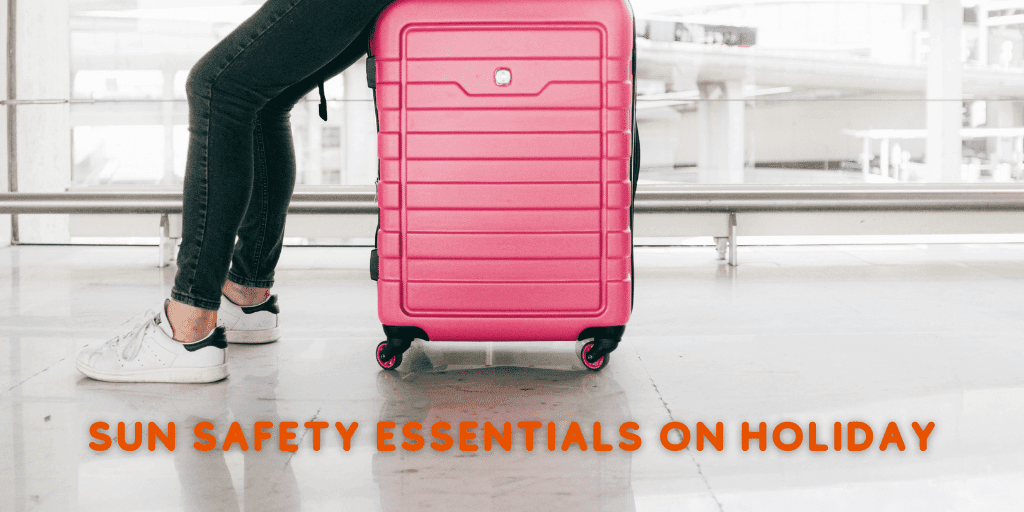
As we all start to get ready for the summer holidays (HOORAY!) some us might be making a start on shopping for the essentials. If this is you- well done! You are very organised and very sensible. If this ins’t you, fear not. There’s plenty of time, as long as you pack the essentials for sun safety…
What top your essential sun safety packing list this summer? Your SnoozeShade, of course. If you’re not sure, then check out last week’s post on SnoozeShade and sun safety– any questions, please get in touch. You will definitely need a good shade for your pram when you go on holiday, so naturally we recommend any of the SnoozeShade for prams, depending on the age of your baby. Please do let us know if you need help choosing.
Other items you need
What are your suncare essentials? Anything we missed?
Jun 25 2015
Posted by: SnoozeShade HQ

As the summer holidays approach, lots of us will either be preparing for a long awaited holiday away from home, or battening down the hatches for a long summer at home instead. Either option has it’s merits, but we wanted to talk today to those of you who feel a holiday with kids is more hassle than it’s worth. We want to tell you that yes, a holiday with kids can be work- but it is totally worth it! Want to know more? Here are three reasons to take your kids on holiday. Let us know if you have any more!
Make some memories
Throughout the course of a busy year, us parents seem to work and work and work. For some, the guilt at not spending as much quality time with the kids as we would like to can knock us hard. We all have commitments and deadlines and bill to pay. That is one thing in life that will never change. But beyond that, what are we working for? How about the smile on your child’s face as they roll down a hill on a sunny day? The squeals of excitement when you strap them into the car on a sunny day and head of for an adventure? The contended smiles as they settle into the crook of your arm at the end of a busy day?
And who doesn’t love to look back at photos and remember special days, happy times and wonderful celebrations? That’s what holidays are about, especially when you’re little. Memories can never be deleted or mislaid. Happy memories of spending time paddling on the beach, or strolling along the winding streets of a small Italian town are yours forever. And the memories made on holiday are likely to be even happier if you follow these simple tips too:
Show them the world
It’s so easy to tell kids about the things they haven’t seen. We have TV, films, the internet and photos that can teach them all about the wonders of the world… but it’s nothing like experiencing the real thing first hand. Carry this with you:
Tell me and I will forget, teach me and I may remember, involve me and I will learn.
Benjamin Franklin
It cannot be more true. Your child has so much to learn from the world around them- as do you. Involve them in as many experiences as you can, to enrich their lives, build on their knowledge and give them the confidence to get out there and do! From languages to new cuisines, your child is a little sponge ready to soak up everything they come across- so make it worth it!
Break from the routine
One of the best things about taking kids on holiday is that they pretty much adapt to any new situation relatively well. So taking them on holiday can mean that the routine you so carefully crafted at home can just up sticks and come with you too. But being on holiday can also be a much appreciated break from the routine too. No school run, no after school clubs, no work meetings. Time to break from the routine and have fun!
Here are some top tips for making a broken routine work on holiday:
What are your top three reasons for taking the kids on holiday?
Jun 10 2015
Posted by: SnoozeShade HQ

When you go away with the kids you open up their world that little bit more. It’s fantastic to read about far away places in books and to watch documentaries about little hideaways around the globe- but actually getting out there and experiencing it is another thing altogether. We’re huge advocates of travelling with kids and see no reason why you can’t see the world with little ones in tow. But what happens a when you travel so far that you enter vastly different time zones? What are kids like when they have jet lag? Hopefully this post will help….
What is jet lag?
Lots of children will sleep during long journeys, so often their jet lag will not be as profound as yours! However, it does make sense to be prepared for what may or may not be in store. Here are some tips to help you:
If you fly west to east, your body will have a harder time coping with the time difference. Shorter days are more difficult to adjust to. So bear in mind where you’re travelling too so that you can prepare accordingly.
Choose your flight carefully. If you get an overnight flight chances are the kids will sleep through the whole thing and jet lag may not be a huge issue. If you arrive in the morning at your new time zone it’s easier to adjust to the day if you’ve got some sleep handed your belt, so make sure you try to sleep too.
Make sure your accommodation is well planned and ready for your arrival. Don’t forget your snoozeshade for travel cot so that you can create a cosy sleeping space.
Plan for jet lag. If you know the kids are going to be groggy and irritable for the first few days make sure your schedule is light at first.
Change the time on your watch as soon as you arrive so that you can adjust more quickly- but leave at least one device (your phone for example) on home time so that you can have an idea of when the kids would normally be napping. This will help to identify potential issues with tired behaviour, and allow you to plan accordingly.
Be strict with routine. And by that we mean after an initial settling in day, try to limit naps so that the kids aren’t sleeping any more than they usually would at home. This will help them to adopt that new rhythm more easily.
Keep food and snacks healthy and regular throughout your travels and during your holiday.
Try a later bedtime for older kids. When you’re on holiday chances are you will be out later anyway, but for babies you’ll want then to keep their bedtimes as close to normal as possible. And if you’re out, don’t forget your SboozeShade so baby can sleep!
What are your experiences of jet lag? Any tips to share?
May 28 2015
Posted by: SnoozeShade HQ

When you become a parent, lots of things change, especially vacations. Lots of aspects of travelling change; where you go, how you get there and what you do when you arrive. So, while you might have hated the idea of a child-friendly destination before you became a parent, suddenly it looks like a great idea.
Life is so much easier all round when your vacation destination is child-friendly. So, what makes a child-friendly vacation and why do families like to go there? Here’s a very quick guide to child-friendly vacations. We hope it helps and don’t forget to pack SnoozeShade!
Generally speaking, a child friendly vacation has:
Depending on where you go and what type of accommodation you choose, there should be some or all of the above to make your vacation a little easier with kids.
Gone are the days of luxury cruises around the Bahamas… or are they? These days, kids are welcome on most package vacations but that’s not to say it’s always appropriate to take them. Before you book, it’s a good idea to think about your family and what you all like to do together. Are you outdoorsy? Camping could be fun. Do you like to wander art galleries and eat in cafes? A city break might be perfect. Kids love the beach and swimming pool? You know what to do.
Don’t try to force fun onto your family. If you’d really like a sporty vacation, try the activities out at home before you book, so that you’re really sure the whole family will enjoy it when you get there. There’s nothing worse than taking the family skiing, hiking or boating, only to discover nobody likes it at all!
Sit down together and involve the kids in the decision making, if they are old enough. Let them suggest destinations or talk about what they want to do on vacation. There’s a really good chance you’ll be able to please everyone with the right destination.

Again, that depends on your family and what you enjoy doing together. But there are some things worth considering before you book:
If your budget is tight you should look at family friendly vacations closer to home, there is no shame in that because it’s nice to just get away as a family no matter where you go. But if you are intending on heading abroad, hopefully we’ll have given you some great things to consider before taking the plunge and booking!
Where are you off to on vacation this year?
Further Reading:
Camping, Glamping and Festival Essentials for Babies and Toddlers
Ten Of The Best Products When Sleeping Away From Home With Your Baby
Three Baby Sleep Problems and Solutions
May 11 2015
Posted by: SnoozeShade HQ

Here are our top travel hacks for travelling with kids; hopefully they’ll help your holiday with baby run a little more smoothly.
Let’s face facts; travelling with children is not for the faint-hearted. However, it’s one of the most rewarding and amazing experiences that a family can have. Exposing our kids to new cultures, customs and landscapes helps us to shape them into creative, inquisitive beings and travelling with kids opens doors, too. It widens their vocabulary, introduces them to new tastes and textures and helps to foster an appreciation for the world around them. You’re building memories that will stay with them forever. So yes, travelling with kids is not always easy but it is always worth it.
Before we start… don’t stress.
Make this your mantra. It really isn’t worth spending all that money and time away from home of you are going to be stressed during your travels. As many travel experts say, try to go with the flow! Although a plan is good, trying to stick to it rigidly with kids in tow just adds an extra layer of stress and you don’t need it.
Be prepared for your journey with activities and toys
Let’s start with the most obvious thing. Kids get bored easily and long journeys can be boring. Some kids will sleep while travelling, which is great but if your kids aren’t sleeping, you don’t want them complaining or fussing either. Make the journey work for you! @MummyJourno recommends a good mix of cheap toys and activity packs that you pull out once an hour (or at regular intervals, depending on the age of the child) to keep boredom levels at bay. We love this idea. It works!
Pack wisely
Kids come with a lot of stuff! Remember that if you’re going somewhere hot, you won’t need as many clothes as usual but it’s still likely that your little ones will need more changes of clothes than you each day. If there are no washing facilities where you’re going, you need to pack wisely.
Handle the airport with ease
Sometimes flights are delayed and there is nothing we can do to prevent that. If you do find yourself spending longer than you planned in the airport, try these hacks to get through it all in one piece.
Create a home from home
Human beings are creatures of comfort, especially kids. It will help them to settle in on vacation if they have a sense of security that comes with familiar items, so try the following to make life easier for you all.
What are your top travel hacks for busy parents?
Further reading:
Travelling with a newborn? Here are our top tips for an easy and stress-free journey

© 2025- SnoozeShade | All rights reserved